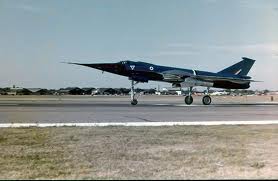
In the heady days after the Second World War, experimentation with jet engines and new wing configurations was rife and lots of futuristic designs were tested and even more prop

osed. Fairey started experimenting with delta aircraft with the Fairey Delta 1 in 1950. The experiences from this was used in the development of the more advanced Fairey Delta 2 which was first flown in 1954. The first prototype was serialled WG774.The F.D.2 met all expectations and it was decided that an attempt to exceed the magic speed limit of 1000 miles per hour (446 m/s) would be made. On 1956-03-10 Peter L. Twiss flew the F.D.2 at 1132 miles per hour (505 m/s), raising the earlier record by 38%!
A second F.D.2 prototype, serialled WG777, was first flown in 1956. Both aircraft were used for test flights through the rest of the 1950s. Meanwhile, development work on the BAC/Sud Concord(e) had begun and BAC received permission to modify WG774 to test the untried ”ogive” wing. WG774 was transferred to BAC in 1960 and a rebuilding program started, giving the aircraft the new wing, a longer body and taller landing gear, so it was with good reason that the new aircraft had been renamed the BAC 221 when it was reflown in 1964. However, by this time construction of the Concorde was already well underway, so the BAC 221 was too late to really give any input to the wing design process. Still it was used for other tests until it was finally retired in 1973. Today Fairey Delta 2 WG777 resides in the Royal Air Force Museum Cosford and BAC 221 WG774 in the Fleet Air Arm Museum in Yeovilton.